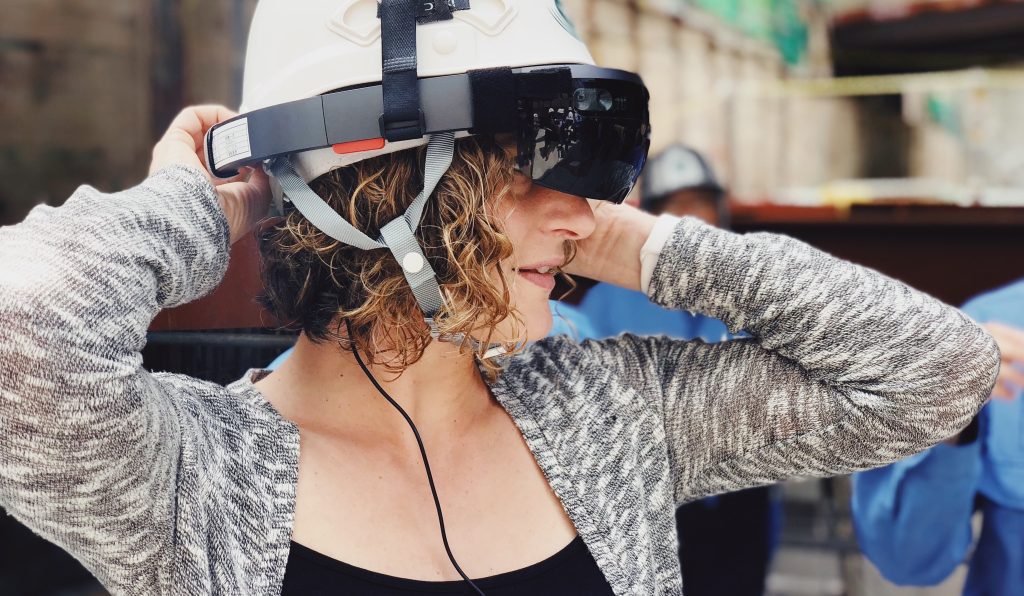Hey everyone!
Wow, time really flies. I can’t believe it’s been two weeks since I talked about our vision for mixed reality in the modern workplace and unveiled Microsoft Remote Assist and Microsoft Layout at Build! That was such a fun day for me and my team. The feedback from customers, partners, and developers has been tremendous, and we can’t wait to deliver these apps to you all.
Fast forward to today, and I had the privilege of speaking at Tokyo de:code. I talked more about our vision for mixed reality at work, the changing modern workplace, and how products like HoloLens can empower both Information and Firstline Workers to achieve more. The positive energy and support coming out of Asia for mixed reality and Microsoft HoloLens has been overwhelming (more on that below).
As part of my presentation I made a couple of very important mixed-reality announcements that I wanted to share with you all.
Microsoft Remote Assist and Microsoft Layout available today as limited-time free preview
I love being able to change from “coming soon” to “available today!” The team has worked hard to get these ready for all of you to try out and give us feedback. Feedback will enable us to make them generally available to customers as soon as possible.
Remote Assist and Layout are available starting TODAY as a limited-time free preview in the Microsoft Store!
With Remote Assist we set out to create a HoloLens app that would help our customers collaborate remotely with heads-up, hands-free video calling, image sharing, and mixed-reality annotations.
With Layout our goal was to build an app that would help people use HoloLens to bring space designs from concept to completion much more quickly by viewing their designs at real-world size and scale.
A great way to see Remote Assist and Layout in action is through the work of ZF Group, a German car-parts manufacturer headquartered in Friedrichshafen. An early partner on our journey, ZF Group has been working with us over the past few months to help ensure these apps, even in preview, are crafted with insights from those who will be using them daily to get their work done. In developing these apps with customers, we are not only looking to make great software—we’re looking to empower the Firstline Workers using the apps.
Here’s a look into how ZF Group has been using Remote Assist and Layout on its factory floor.
Additional information, such as device requirements, technical requirements, and network requirements for both Remote Assist and Layout, can be found here.
Windows 10 April 2018 Update for Microsoft HoloLens coming soon
Second, I’m excited to announce that the Windows 10 April 2018 Update is coming to HoloLens!
HoloLens customers in our Windows Insider Program have been testing previews of this release and have given us great feedback on some new features that will be generally available in the next few weeks.
There are quite a few important updates coming for IT administrators, developers, and our commercial customers.
For IT administrators
The Windows 10 April 2018 Update will improve the ability for IT administrators to provision, secure, manage, and update all HoloLens devices in their organization, including scenarios where multiple people use the same device.
This update provides improved support for Unified Endpoint Management solutions (also known as MDM) like Microsoft Intune, making it possible for IT admins to simplify and automate device management. Microsoft Intune, powered by the intelligent cloud, empowers employees to create and work together, securely, and enables organizations to protect corporate data in today’s diverse and complex mobile environment.
To integrate HoloLens solutions with different environments and platforms, we have also announced partnerships with additional Unified Endpoint Management providers including IBM MaaS360, MobileIron, and SOTI which will start delivering solutions to market soon.
For developers
For developers, the Windows 10 April 2018 Update will bring improvements in spatial mapping, automatic selection of focus point to improve hologram stability, new holographic projection modes, and APIs to help developers tailor apps.
It will also deliver a feature that I’m particularly excited about: research mode. Research mode allows developers to access key HoloLens sensors when building academic and industrial applications to test new ideas in the fields of computer vision and robotics. I can’t wait to see what our community comes up with using research mode!
For end customers
Last are the improvements we are bringing with this update that will directly benefit our customers who are using and sharing with HoloLens.
The Windows 10 April 2018 Update for HoloLens uses AI to implement features like auto-placement of new content (2-D and 3-D) on launch so you can seamlessly enter mixed-reality experiences. You’ll notice a new ability to fluidly manipulate apps when you want to move, resize, and rotate 2-D or 3-D content without having to enter “adjust” mode. You can make a 2-D UWP app like Mail wider to see more content. With expanded voice command support you can do more, simply using your voice. We’ve updated apps like Holograms and Photos and improved mixed-reality capture with a hardware shortcut. And thanks to many requests, now there is support for File Manager and Media Transport Protocol, so you can connect HoloLens to your PC and easily transfer files.
Finally, we’ve simplified the space management for holograms and improved the immersive spatial audio. You can now hear HoloLens better in noisy environments, and experience more lifelike sound from applications because their sound will be obscured by real walls detected by the device.
There’s a whole lot more in this update as well. For a detailed description of the new capabilities, check out our Windows 10 April 2018 Update page.
Momentum for HoloLens and Mixed Reality in China and Japan
In addition to speaking at Tokyo de:code I have spent the past several days meeting with customers in Beijing and Tokyo. There is nothing I love more about my job than spending time with our customers.

On Friday, May 18, we celebrated the one-year anniversary of HoloLens in China. The growth we have experienced in just 12 months has been tremendous, a testament to the passion of the China mixed- reality development community—some of the most dynamic developers in the world.
Developers and partners have shown a tremendous willingness to transform their businesses in MR. We are seeing innovation in healthcare, education, government, AEC (Architecture, Engineering & Construction), manufacturing/auto, aviation, and media.
A few of the partners I spent time with included:
- Arcplus – Arcplus is a leader in China’s AEC industry. Through its subsidiary Actron, it is leading digital transformation for construction and engineering. Arcplus believes that mixed reality, HoloLens, and Azure are key elements of its digital transformation strategy.
- Visual3D – As part of our global Mixed Reality Partner Program, Visual3D has moved quickly to impact innovation in clinical medicine, medical teaching, and medical research through Microsoft HoloLens. Visual3D collaborated with Dr. Zhewei Ye of Wuhan Union Hospital to perform the first HoloLens-assisted remote cooperative orthopedic surgery.
- DataMesh – Another member of our Mixed Reality Partner Program, DataMesh brings together Azure, HoloLens, and Mixed Reality, as well as data science to provide solutions for Firstline Worker scenarios. Through a collaboration with GAC Honda, DataMesh has created a digital twin of a Honda factory to show modern production processes.
In Japan it was more of the same. The passion, ingenuity, and creativity we see from customers, partners, and developers is mind-blowing. From the moment we brought HoloLens to Japan they have been setting an incredibly high bar. They have taken a bold approach toward implementing mixed reality that we believe will serve as a catalyst for invention others will surely follow.
I saw so many amazing use cases. Some of my favorites included:
- Informatix – Tokyu Construction has partnered with Informatix, an MRPP partner, to create the application GyroEye Holo. I had a chance to see this in person at one of its construction sites—it was amazing to see actual blueprints layered over the real world.
- JRCS – I’ve had the opportunity before to see the impressive work JRCS is doing to prepare for a future of autonomous shipping, to support their employees with high-quality training, and to enable more efficient remote maintenance and repair. That said, it was even better to meet the team themselves and try out a demo.
- Pocket Queries – I had the chance to see the solution “QuantuMR” created by Pocket Queries in partnership with Tokyo Electric Power Company Holdings. This was an impressive four-step scenario using multiple building systems, IoT integration, and even a holographic printer!
I look forward to sharing more updates next month. As always, feel free to reach out to me on Twitter to share what you are doing with mixed reality.
Talk soon!
Lorraine

Source: Windows Blog
—